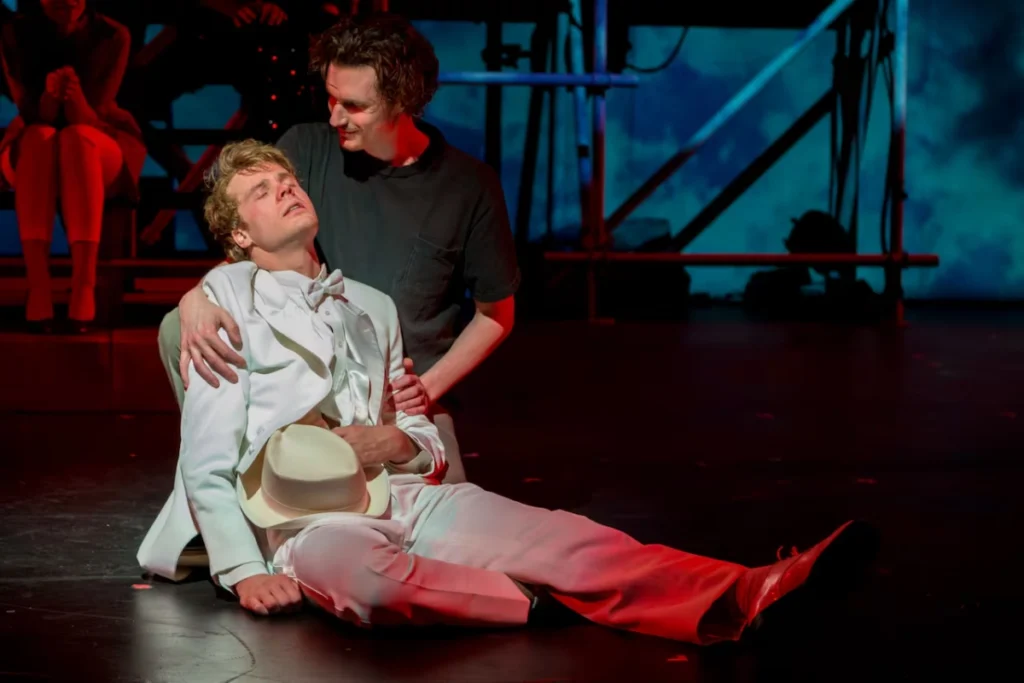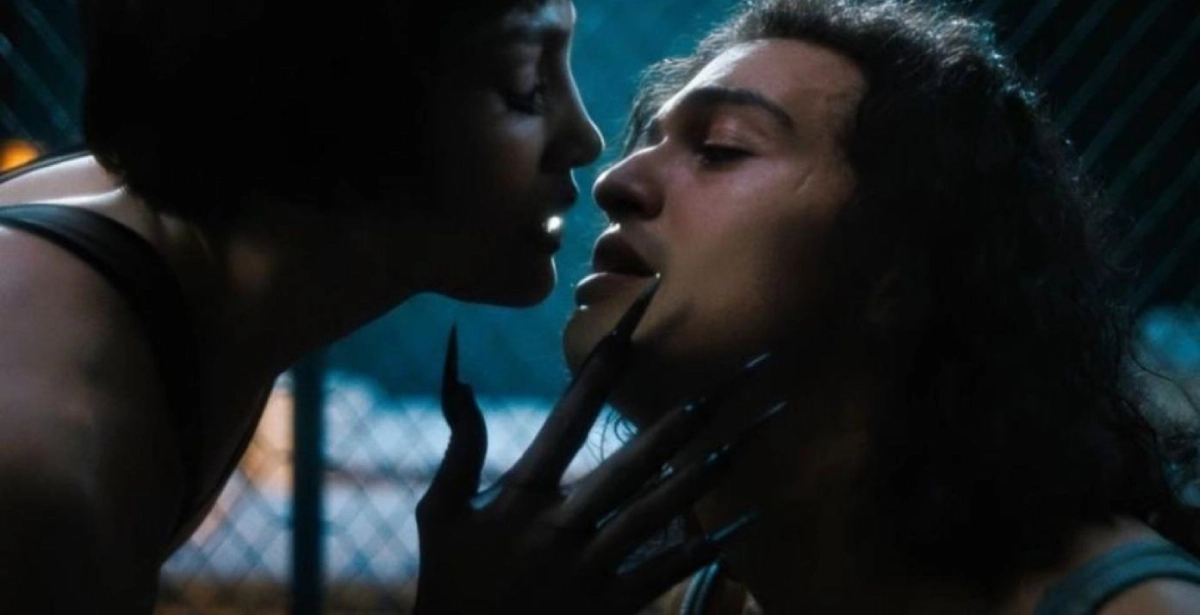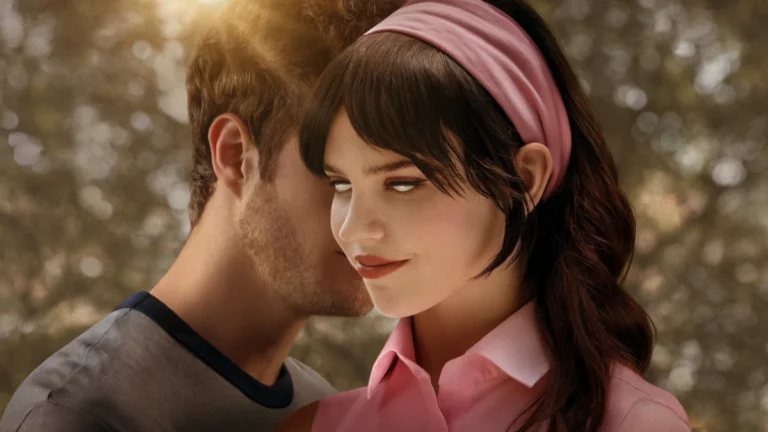Kiss of the Spider Woman” (2025) Review: A Glittering Ode to Cinema and Resistance
A Tale of Two Worlds
Bill Condon’s 2025 adaptation of Kiss of the Spider Woman is a bold reimagining of Manuel Puig’s seminal novel, blending the gritty realism of political oppression with the glittering escapism of Golden Age Hollywood. Set in 1983 Argentina during the Dirty War, the film tells the story of two cellmates: Luis Molina (Tonatiuh), a flamboyant queer hairdresser imprisoned for “corrupting a minor,” and Valentín Arregui (Diego Luna), a stoic Marxist revolutionary jailed for his anti-government activities. Their unlikely bond forms the emotional core of a film that oscillates between the harshness of their reality and the Technicolor fantasies Molina conjures to survive.
At the heart of these fantasies is Jennifer Lopez’s Ingrid Luna, a screen siren who embodies Molina’s idolized vision of cinema. Lopez plays three roles within the film: Aurora, a tragic starlet; the Spider Woman, a seductive femme fatale; and Ingrid, Molina’s personal muse. These fantasy sequences, dripping with neon-lit art deco glamour, provide a stark contrast to the grim, handheld realism of the prison scenes. Yet, while the film’s visual ambition is undeniable, it struggles to reconcile its two worlds, leaving the audience torn between awe and emotional detachment.
Facts about Kiss of the Spider Woman” (2025)
| Category | Details |
|---|---|
| Director | Bill Condon |
| Producers | Barry Josephson, Tom Kirdahy, Greg Yolen; Jennifer Lopez serves as Executive Producer |
| Starring | Jennifer Lopez, Diego Luna, Tonatiuh Elizarraraz, Tony Dovolani, among others |
| Music | John Kander |
| Cinematography | Tobias A. Schliessler |
| Runtime | 128 minutes |
| Language | English, Spanish |
| Budget | $60 million |
| Premiere | Sundance Film Festival, January 26, 2025 (received a standing ovation) |
| Based On | Manuel Puig’s 1976 novel and the 1992 Broadway musical by Terrence McNally, John Kander, and Fred Ebb |
| Key Themes | Escape, repression, gender identity, transformation |
| Notable Aspects | Distinct visual contrast between gritty prison scenes and lavish fantasy musical sequences; creative use of shifting aspect ratios to delineate reality from fantasy |
Performances: Lopez Dazzles, Tonatiuh Steals the Show
The film’s greatest strength lies in its performances. Tonatiuh delivers a career-defining turn as Molina, capturing both the character’s flamboyant exterior and the deep vulnerability beneath. Their portrayal of Molina as a trans woman adds a layer of complexity to the role, though the film often reduces this identity to surface-level aesthetics rather than exploring its emotional depth. Still, Tonatiuh’s charisma and emotional range anchor the film, making Molina’s journey both compelling and heartbreaking.

Jennifer Lopez is magnetic as Ingrid Luna, commanding the screen with her star power and dance prowess. Her triple role allows her to showcase her versatility, from the tragic vulnerability of Aurora to the campy menace of the Spider Woman. However, the script doesn’t fully flesh out her character, leaving her as more of a symbol than a fully realized individual.
How was the film received at its Sundance premiere?
Premiering at the Sundance Film Festival on January 26, 2025, the film garnered a standing ovation, particularly for Jennifer Lopez’s dazzling performance and Tonatiuh’s emerging talent. Critics noted its ambitious blend of musical spectacle and gritty drama, though opinions varied on the overall execution of its dual narratives.
Diego Luna brings a quiet intensity to Valentín, though his character feels underdeveloped compared to Molina. The film rushes the emotional arc of his relationship with Molina, making their eventual bond feel more like a narrative necessity than an organic connection. Despite this, Luna’s performance is grounded and compelling, particularly in scenes where Valentín’s revolutionary ideals clash with Molina’s escapist fantasies.
Direction and Aesthetic: A Feast for the Eyes
Bill Condon, known for his work on Dreamgirls and Chicago, brings his signature flair for musical spectacle to Kiss of the Spider Woman. The fantasy sequences are a visual feast, with cinematographer Tobias Schliessler bathing them in vibrant colors and intricate set designs that evoke the golden age of Hollywood. The choreography, reminiscent of classic MGM musicals, is executed with precision and flair, particularly in Lopez’s show-stopping “Spider Woman” number.
However, the film’s tonal shifts between these lavish fantasies and the grim reality of the prison create a jarring contrast. While this juxtaposition is clearly intentional, it often feels uneven, leaving the audience unsure whether to revel in the spectacle or grapple with the weight of the political context. The prison scenes, shot with a raw, handheld aesthetic, are effective in conveying the brutality of the regime, but they lack the emotional depth needed to fully invest the audience in Valentín’s struggle.
Music and Themes: Style Over Substance
The score by John Kander and Fred Ebb, the legendary duo behind Cabaret and Chicago, is serviceable but lacks the memorable hooks of their earlier work. Songs like “She’s a Woman” and “Spider Woman” are visually stunning but fail to leave a lasting impression. The film’s central theme—the power of cinema as both escapism and resistance—is intriguing but underexplored. Valentín’s critique of Molina’s fantasies as “propaganda” is never fully addressed, leaving the film’s commentary on art and oppression feeling half-baked.

The relationship between Molina and Valentín, which should be the emotional core of the film, is rushed and underdeveloped. Their bond, which evolves from mutual distrust to a deep, almost romantic connection, feels more like a plot device than a genuine emotional journey. This is particularly disappointing given the rich source material, which delves deeply into the complexities of their relationship.
Historical Context: A Missed Opportunity
The film’s setting during Argentina’s Dirty War provides a rich backdrop for exploring themes of resistance and survival. However, the political context often feels like an afterthought, serving more as a plot device than a driving force. The film touches on the horrors of state torture and political repression but never delves deeply enough to make a meaningful impact. This lack of engagement with the historical context undermines the film’s potential to be both a compelling character study and a powerful political allegory.
Final Thoughts: A Beautiful Paradox
Kiss of the Spider Woman is a film of contradictions—a dazzling visual spectacle that struggles to find its emotional core, a story of resistance that shies away from its political stakes, and a celebration of cinema that never fully grapples with its own artifice. While the performances, particularly Tonatiuh’s and Lopez’s, elevate the material, the film’s tonal inconsistencies and underdeveloped themes prevent it from reaching its full potential.
For all its flaws, Kiss of the Spider Woman is a testament to the enduring power of storytelling, both as a means of escape and a tool for survival. It may not fully succeed in its ambitions, but it remains a fascinating, if uneven, exploration of the intersection between fantasy and reality.
Kiss of the Spider Woman premiered at the 2025 Sundance Film Festival and is currently seeking U.S. distribution.



